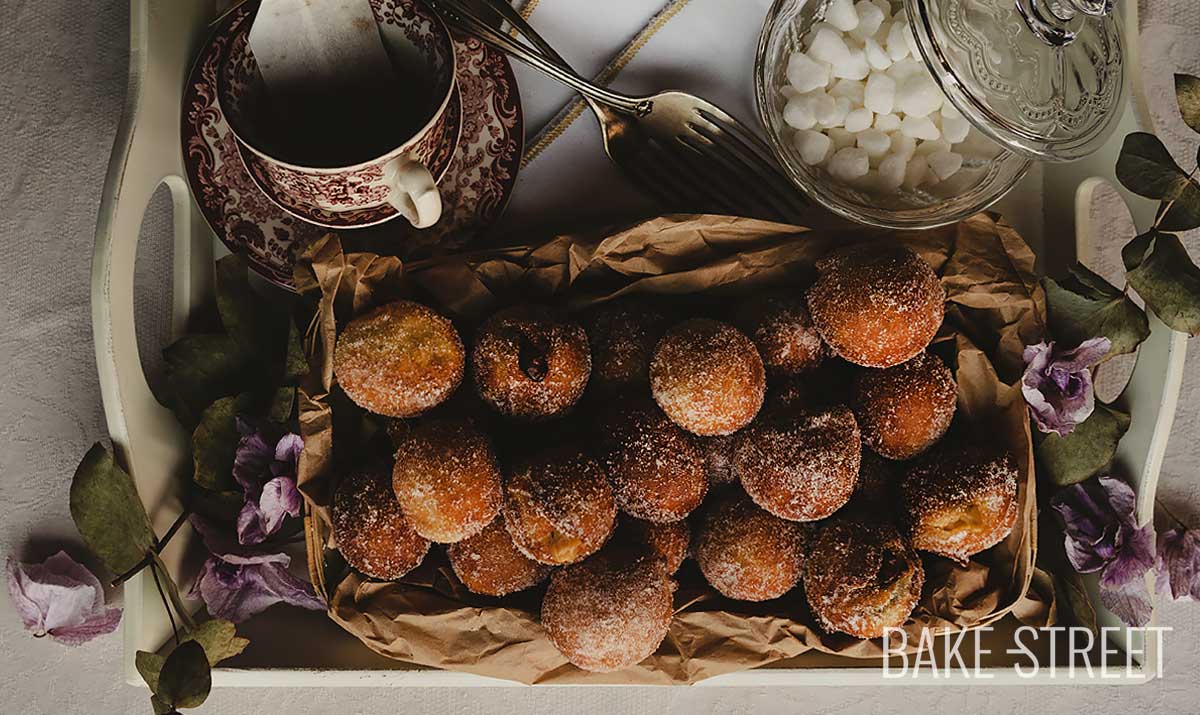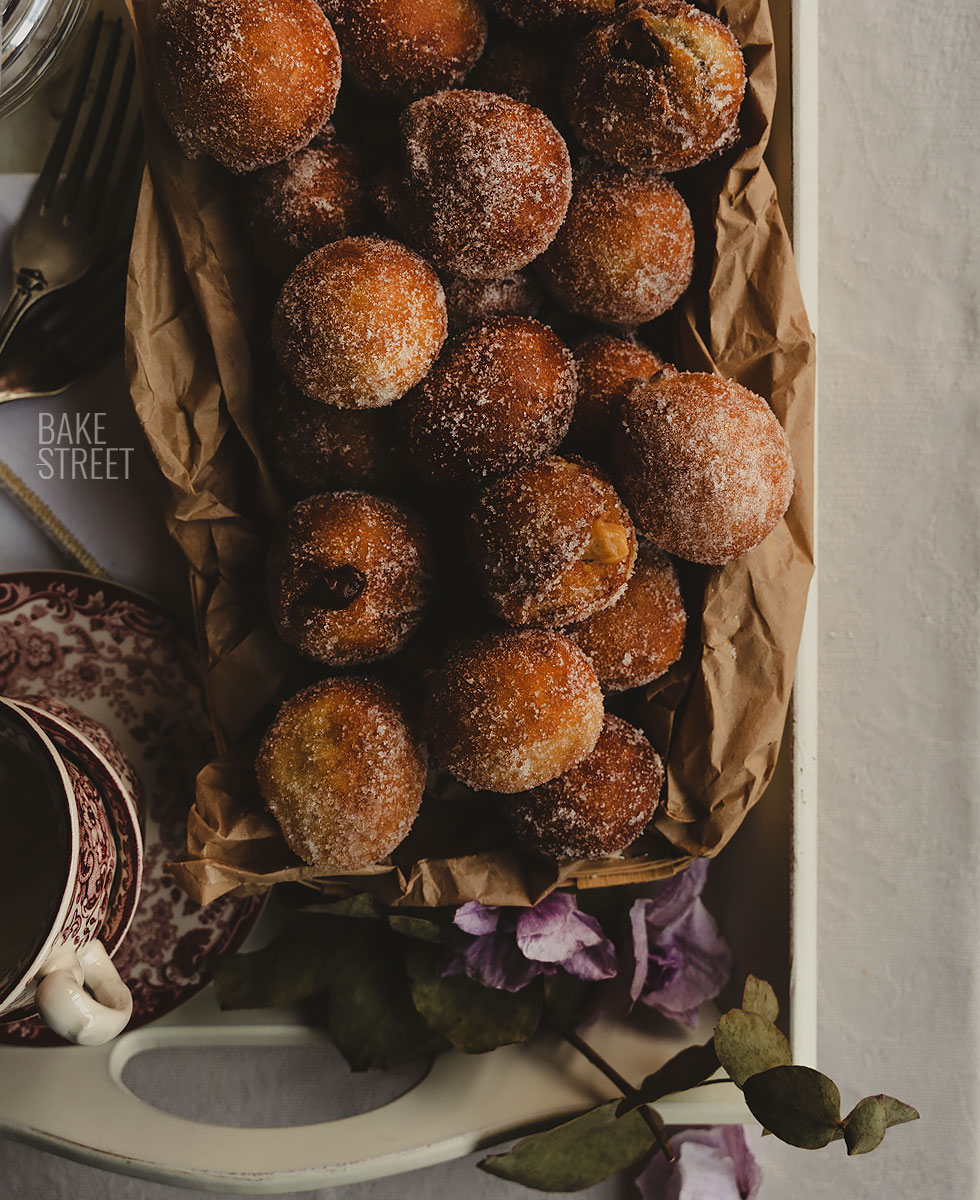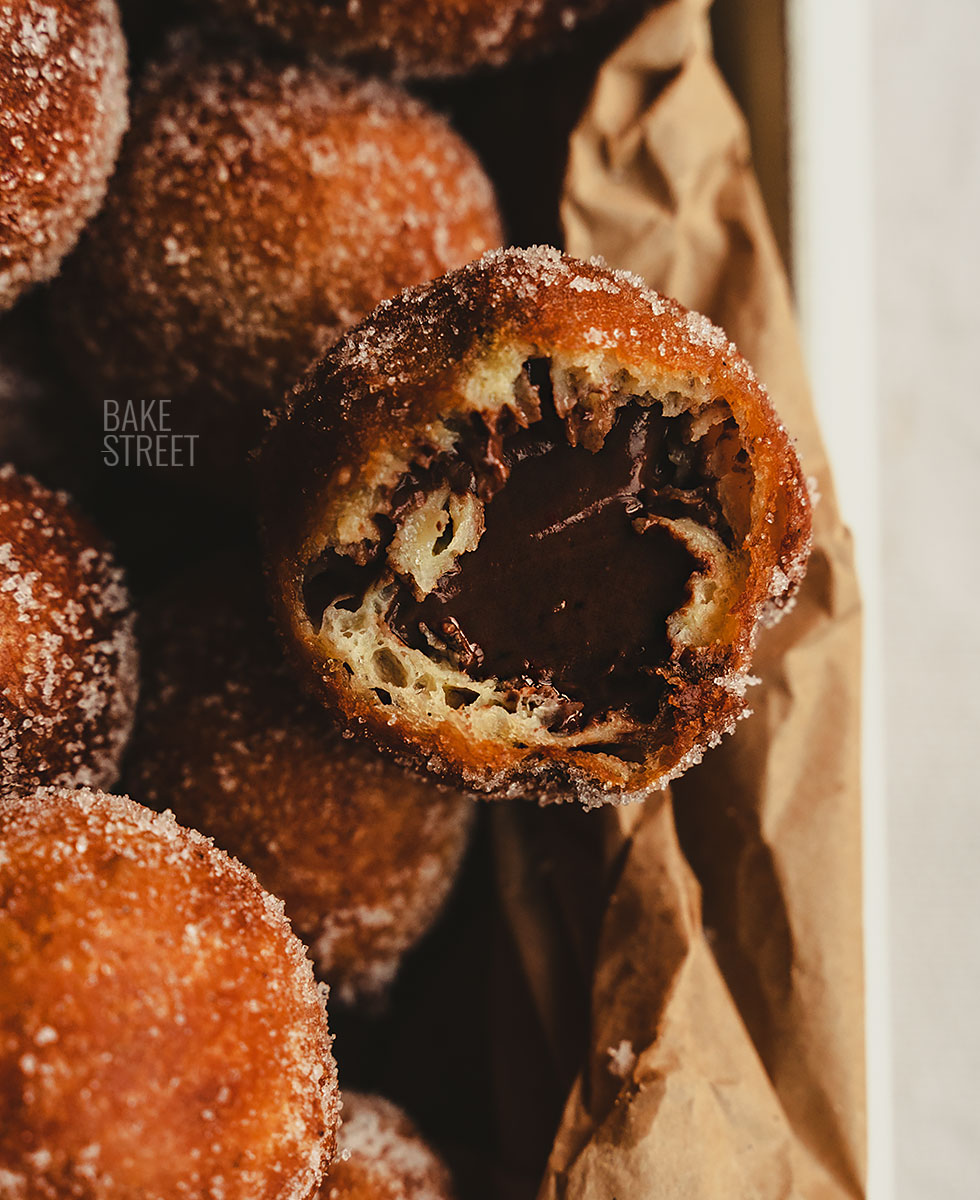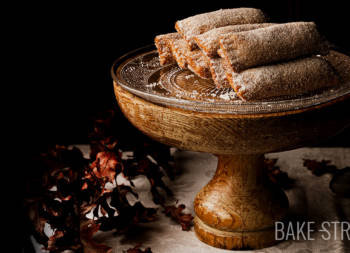
How to make Buñuelos de Viento
Is it too early to start sharing recipes for All Saints’ Day? Because I had an immense desire to share with you how to make Buñuelos de Viento, sweet fritters traditional from Spain. Of all the sweet treats that it is customary to enjoy during those dates, I think these are my favorite.
Other years I have been a little more fair when it comes to sharing recipes for this day, but this year it was clear that I was not going to happen again. In addition, some of you have written me to ask me if I could leave you this recipe that I leave you today and the famous Huesos de Santo (Saint’s bones). For my part I am always happy to read you, that you ask me for recipes that you would like to have and, of course, to share them with all of you.
Today’s preparation is one of the so-called “pan fruits – frutas de sartén“. Whenever I read this terminology, I fall in love… I find it absolutely beautiful. I already told you what they are in this post, but I make a brief summary here;
This term is used to describe culinary preparations that are fried, that is, cooked in hot oil. The technique of fried dough dates back in Spanish cuisine to medieval times, a practice known from Sephardic cooking. Some of the earliest Spanish cookbooks describe this frying process by this name.
Which, really, is beautiful to me.

Buñuelo de viento origin.
The origin of the word buñuelo is a bit controversial, but this does not come as a surprise since most of the traditional pastries have this same trait in common. Some suggest that it derives from “puñuelo“, these were balls of dough that the Romans kneaded with their fists, hence its particular name. However, other sources believe it comes from the French “beignet“. These are sweets consisting of fruits or vegetables (apple, pineapple, potato…) covered by a rather runny batter that are then fried in hot oil.
Is it possible that this is where the wonder of “pan fruits” comes from?
And then we have buñuelos de viento, a fried dough that is filled with pastry cream or other types of fillings. In Spain, this type of pastry is mainly consumed during All Saints’ Day and All Souls’ Day. In fact, they are also called buñuelos de Todos los Santos (All Saints’ Day fritters).
As for how and where they were created, it seems that everything points to the fact that it is an elaboration with Arab roots. It is believed that the fritters emerged in Almogía, a village in Malaga, in the year 1090 when the Sevillian king Mohamed ben Abad Al Motamidsurrounded the fortress of the city.
It was a time when food was scarce as well as the wood used to light the ovens. A baker, named Abdelaziz ben Drisi el Jabazun, took stock of supplies and decided to prepare some batter fritters made with water and flour. Then he climbed to the top of the castle and cooked them in the cauldrons of boiling oil that were used to be thrown over the assailants. In this peculiar way, the buñuelos de viento were born.

Making buñuelos de viento.
Undoubtedly, this is one of the preparations that we can classify as an easy or simple recipe. As simple as mixing and frying. It is true that we must follow some steps and process to obtain good results, but it is an elaboration within everyone’s reach.
I recommend you to follow each and every one of the steps that I detail so that everything goes well and the fritters are moist, tender and, of course, that they are not uncooked inside. As filling we can use practically whatever we like. In my case I leave you two options; a dark chocolate ganache and a pumpkin and spice pastry cream. I gave you this cream last year in the Fhoghair Tart, in this recipe you can see how to make it. For me it is extraordinary, with a surprising and wonderful texture and flavor.
It can also be filled with whipped cream, truffle, coffee pastry cream, pastry cream, ganache of any kind of chocolate, jams, candied spaghetti squash… As I said, whatever you like. Although alone, as they are, they are also incredible. The final touch will be given with sugar. We can roll the fritters in sugar once we take them out of the pan or sprinkle them with powdered sugar just before serving, I leave it to your choice.
Recipe Buñuelos de Viento
Ingredients for 35 pieces
BATTER:
- 150 g pastry/cake flour
- 125 g water
- 125 g whole milk
- 55 g unsalted butter
- 4 large eggs
- 1 cinnamon stick
- 2-3 lemon peels
- 1 1/2 tsp natural vanilla extract
- 2 g sugar
- 4 g salt
- olive oil for frying + sugar for rolling
FILLING:
- pumpkin and spice pastry cream, recipe
- 80% chocolate ganache (75 g dark chocolate 80% + 150 g heavy cream)
- we can use other fillings such as whipped cream, pastry cream, dulce de leche...
MATERIAL WE WILL NEED:
- saucepan
- wooden spoon
- large bowl
- 2 coffee spoons
- slooted spoon
- digital cooking thermometer (recommended)
- pastry bags
- filling nozzles or plain nozzles 1 cm in diameter
- wooden board and sharp knife
Instructions
Prepare the fillings.
- To prepare the pumpkin pastry cream you can do it following the steps in this post.
- To prepare the chocolate ganache we will do the following. Chop the chocolate, so that it integrates more easily. Add the chocolate to the hot cream, it should come to a gentle boil, and stir until homogenized. Pour into a bowl, cover and let cool to room temperature.
Prepare the batter for buñuelos de viento.
- Sift the flour, set aside.
- In a saucepan add the water, milk, salt, lemon peel, cinnamon and vanilla. Place over medium heat and bring to a gentle boil. Turn off the heat and let the milk infuse for 2 hours.
- Return the infused milk to medium heat and bring to a boil. Add the butter, leave on the heat for a few seconds so that these elements are completely integrated.
- Remove from the heat, remove the lemon peel and cinnamon, and add the sugar, salt and flour all at once. Stir with the help of a spoon/spatula at a fast and continuous rhythm.
- We will obtain a ball of compact dough that we will have to dry. Return to medium heat and stir constantly. This step helps to dry the dough a little.
- We will notice that the dough clings to the base, in total we will cook it 2 minutes without stopping stirring. The degree of drying of the dough will depend on the amount of eggs that it admits, we see it next.
- Transfer the dough to a large bowl and let it warm.
- Add the first egg and stir until homogenized, in this way we also favor that the dough takes air influencing later in what can grow the batter during cooking.
- Add the next egg and mix until completely integrated.
- We will do this same step with the remaining two eggs, the consistency of the batter should be like the one I show you in the video. It is much more runny than traditional choux pastry.
Fry.
- Fill a saucepan with soft olive oil, a little less than half.
- Place over medium heat and let it reach 320ºF/160ºC, using a digital thermometer.
- With the help of two teaspoons, take the batter and give it a little shape. In the video I show you how to do it.
- Drop the batter in hot oil. At the beginning it will fall to the bottom, but it will soon start to rise and puff up. In my pan I can fry 4-5 fritters without problems, keep in mind that they swell a lot.
- Let them cook for several minutes, the fritters will turn only as they swell. If any of them do not, we will help it. They should acquire a nice golden color and practically float in the oil.
- Remove them with the help of a slotted spoon and place them on a dish with kitchen paper.
- While they are slightly warm, place another 4-5 fritters in the pan.
- After a short rest, coat the fritters with sugar and place on a plate.
- Repeat the same process with the rest of the batter.
Fill buñuelos de viento.
- Once all the fritters are fried, proceed to fill them.
- Place the fillings in pastry bags with a filling nozzle or with a smooth nozzle of 1 cm in diameter.
- Fill the fritters, although they are also spectacular on their own, and serve.

Notes
- Infused milk will bring a lot of aroma and flavor to the batter. I advise you not to omit this step.
- We must sift the flour to avoid lumps.
- The drying process is very important because it determines the amount of egg that the dough will admit, the more egg it contains, the more juicy and tender they will be.

- When frying the fritters it is very important to control the temperature of the oil. If the oil is too hot, the fritters will seal and will not fry properly. The result will be a small and dense fritter, and it is very possible that the inside will be uncooked and the outside will be extremely toasted. On the other hand, if it is too low, the dough will get too much oil and the fritters will be very heavy and oily. The end result should be a very light, airy, moist fritter, with a golden brown exterior, but not burnt.
- They can be kept in an airtight container for 2 days. If we fill them, they must be refrigerated and their shelf life will depend on the filling they contain.

I leave you the first recipe to celebrate All Saints' Day, or to prepare them whenever you prefer. Outstanding Buñuelos de Viento. I am sure you are going to enjoy a lot, both making them and tasting them. They are wonderful.
For my liking, they are incredibly better the day we prepare them. Although they are also good 2-3 days later, in fact as we buy them in the bakeries is how we will find them after the first 24 hours since we made them. But that crunchy outside with that moist inside... I love them.
I can't wait for you to prepare them and let me know how they turned out!
Lots of love,
Eva
Sources: Muy Historia





